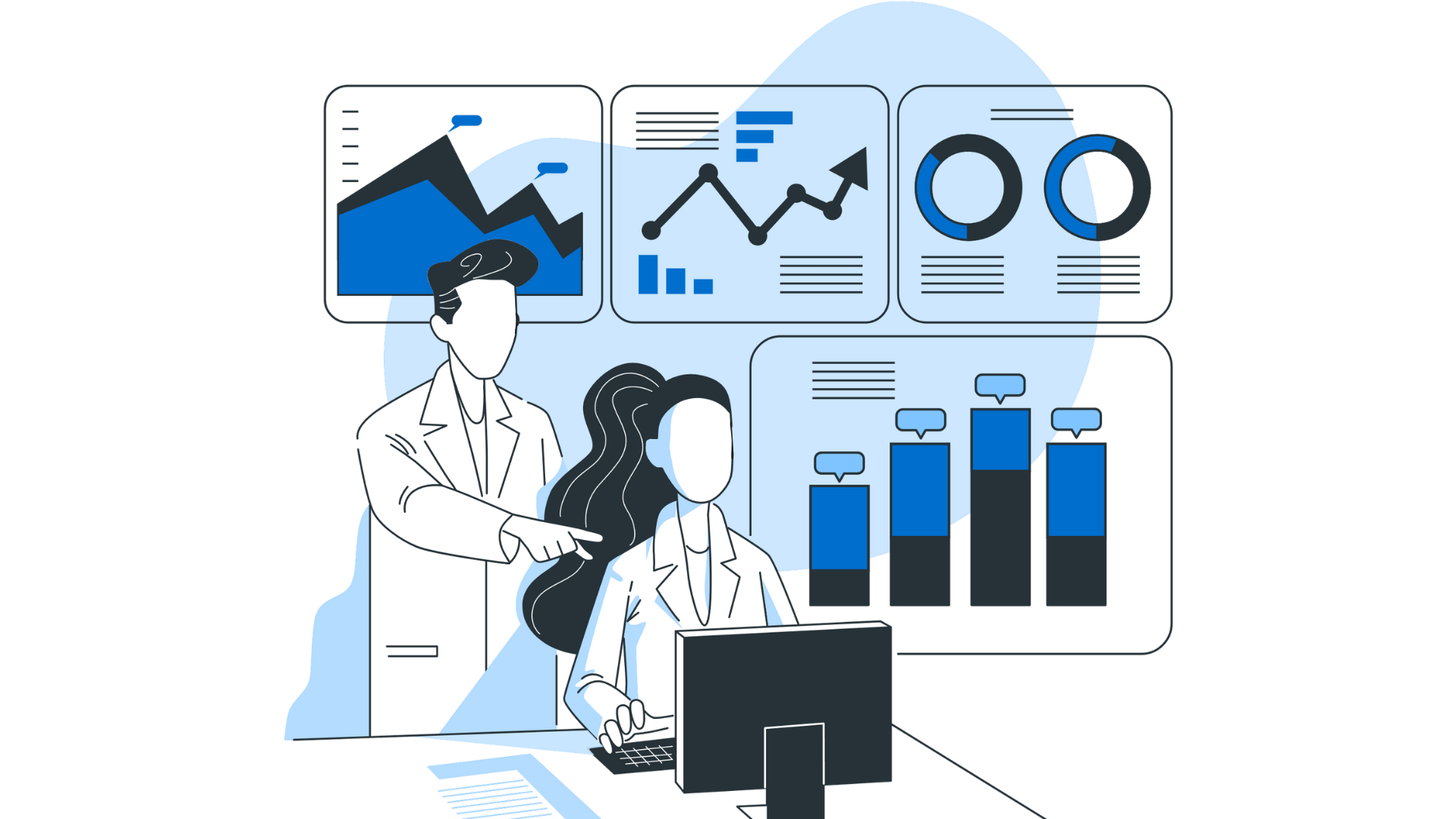Ready to revolutionize your data journey with Infoveave?
Recent Blogs
Smarter Healthcare Decisions: Using a Unified Data Platform for Survival Analysis
Introduction
Healthcare programs are designed to improve patient outcomes, but measuring their effectiveness remains a challenge. Traditional evaluation methods rely on scattered data sources, making it difficult to track patient responses, assess treatment impact, and ensure long-term program success.
A Unified Data Platform (UDP) streamlines this process by integrating patient records, treatment outcomes, and survival analysis metrics into a single, data-driven system. This blog explores how a UDP enhances program effectiveness assessment, tracks patient survival rates, and enables data-driven healthcare decisions.

Challenges in Measuring Program Effectiveness
1. Fragmented Patient Data
Healthcare data is often stored across multiple systems, making it difficult to obtain a comprehensive view of a patient’s treatment journey.
2. Lack of Real-Time Insights
Delayed reporting and manual data analysis hinder timely decision-making, reducing the effectiveness of treatment programs.
3. Inconsistent Metrics for Treatment Outcomes
Programs often lack standardized benchmarks, making it challenging to measure patient responses across different demographics and treatment plans.
4. Difficulty in Conducting Survival Analysis
Understanding patient survival rates requires robust data integration and advanced analytics, which many healthcare providers struggle to implement.
5. Regulatory Compliance and Data Security
Patient data must comply with strict regulations such as HIPAA and GDPR, adding complexity to program evaluations.
The Role of a Unified Data Platform in Program Effectiveness & Survival Analysis
A Unified Data Platform (UDP) addresses these challenges by consolidating healthcare data, automating analysis, and ensuring compliance.
1. Centralized Data Management
A UDP integrates data from electronic health records (EHRs), clinical trials, wearable devices, and patient surveys, providing a holistic view of program outcomes.
Benefits:
-
Eliminates duplicate or missing patient records.
-
Enhances data accessibility for healthcare providers.
-
Improves collaboration between hospitals, researchers, and policymakers.
2. Real-Time Treatment Outcome Tracking
Monitoring patient responses in real time allows healthcare providers to adjust treatment plans proactively.
Features:
-
Live dashboards displaying patient progress.
-
AI-driven alerts for adverse reactions.
-
Comparative analysis of different treatment plans.
3. Standardized Outcome Metrics
A UDP establishes clear benchmarks to evaluate treatment effectiveness based on:
-
Recovery rates: Comparing pre- and post-treatment health conditions.
-
Hospital readmission rates: Identifying areas for improvement.
-
Patient adherence data: Assessing compliance with prescribed treatments.
4. Advanced Survival Analysis
Survival analysis helps in understanding patient longevity and the impact of treatment plans.
Key Metrics Tracked:
-
Kaplan-Meier Estimates: Analyzing patient survival probabilities.
-
Cox Proportional Hazards Model: Identifying risk factors affecting survival.
-
Longitudinal Data Analysis: Tracking patient health over time.
5. Compliance and Data Security
A UDP ensures healthcare organizations meet compliance requirements while maintaining data security through:
-
End-to-end encryption: Protecting sensitive patient information.
-
Automated compliance reporting: Ensuring regulatory adherence.
-
Role-based access control: Restricting unauthorized data usage.
Benefits of Implementing a Unified Data Platform
1. Improved Patient Outcomes
By tracking treatment effectiveness in real time, healthcare providers can tailor interventions, leading to better patient health.
2. Optimized Resource Allocation
A UDP helps healthcare institutions allocate funds, staff, and equipment efficiently based on data-driven insights.
3. Faster Decision-Making
Automated analytics provide immediate insights, reducing the time needed for manual data interpretation and policy adjustments.
4. Enhanced Research and Development
Researchers gain access to comprehensive data sets, improving the accuracy of clinical trials and medical research.
5. Data-Driven Policy Making
Governments and healthcare agencies can develop more effective public health policies by analyzing real-world patient data.
Conclusion
A Unified Data Platform revolutionizes program effectiveness evaluation and survival analysis by providing centralized, real-time, and standardized insights. By integrating diverse healthcare data sources, automating analytics, and ensuring compliance, a UDP empowers healthcare providers to make informed, data-driven decisions that improve patient outcomes and optimize healthcare resources.
As healthcare continues to evolve, investing in a Unified Data Platform is essential for organizations looking to enhance patient care, streamline operations, and drive better treatment outcomes.